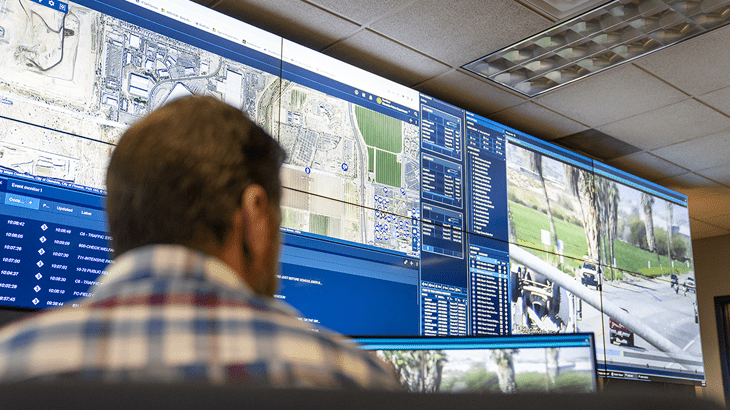In the shadowy realm of cybersecurity, a new arms race is unfolding as artificial intelligence (AI) significantly reshapes the rules of engagement. As cybercriminals harness AI to craft increasingly sophisticated threats, organizations find themselves at a crossroads: adapt or become vulnerable…and pay a heavy price!
As cyber threats evolve at speeds previously unseen, a new player has emerged, redefining both defense and offense: Artificial Intelligence. As organizations grapple with increasingly sophisticated cyber threats, the integration of AI into security strategies has become not just advantageous, but essential. However, this technological advancement has become a double-edged sword, with malicious actors also leveraging AI to enhance their attack capabilities.
Recent findings from Microsoft and OpenAI have sounded the alarm: cybercriminals and state-affiliated threat actors are leveraging AI tools and large language models to enhance their attacks. This development has ushered in a new era where organizations must “fight fire with fire,” deploying AI as an integral part of their cybersecurity posture to fend off AI-powered threats.
 In a recent episode of Real Tech Real Talk, Haggai Polak, Chief Product Officer at Securonix offered valuable insights into this evolving landscape. “Threat actors will leverage every tool at their disposal,” warns Haggai. “They are using AI to create new vulnerabilities, automate scanning, and even produce deep fakes for more effective social engineering.
In a recent episode of Real Tech Real Talk, Haggai Polak, Chief Product Officer at Securonix offered valuable insights into this evolving landscape. “Threat actors will leverage every tool at their disposal,” warns Haggai. “They are using AI to create new vulnerabilities, automate scanning, and even produce deep fakes for more effective social engineering.
AI-Powered Defense: A Necessity, not a Luxury
One of the primary benefits of AI in cybersecurity is its ability to dramatically improve the efficiency of security analysts. Haggai notes, “An analyst that previously needed 20 minutes to investigate an alert can now do it in two minutes. If they needed 15 minutes to do a remediation, they can now do it in 90 seconds.” This efficiency gain is crucial in addressing the persistent shortage of cybersecurity personnel and combating alert fatigue.
AI-powered tools can sift through vast amounts of data, identifying potential threats and anomalies far faster than human analysts alone. Securonix, for instance, has developed innovative AI-driven solutions like their psycholinguistics-based insider threat detection system. This tool analyzes user language patterns to identify potential insider threats, a notoriously challenging aspect of cybersecurity.
The Dark Side: AI-Enhanced Cyber Attacks
While AI bolsters defense capabilities, it also empowers malicious actors. Cybercriminals and state-affiliated threat actors are increasingly using AI tools and large language models to enhance their attacks. These AI-powered threats can be more targeted, stealthy, and occur at greater volumes than traditional attacks.
Haggai cautions that “threat actors will leverage every tool at their disposal. There are thriving toolkits and marketplaces for attackers to use AI to help them create new vulnerabilities, create scripts, automate scanning, and even use AI for deep fakes to do more effective social engineering.”
Balancing AI and Human Expertise
Despite the power of AI, Haggai emphasizes that human expertise remains crucial. “We are very careful not to say that we can replace human analysts,” he states. The goal is to augment human capabilities, making analysts more efficient by providing context and high-probability incidents worthy of investigation.
This balance between AI automation and human oversight is critical. While AI can significantly enhance cybersecurity operations, human judgment is still essential for making final decisions, especially in high-stakes situations involving critical infrastructure or sensitive data.
Cultural and Organizational Shifts
Implementing AI-driven cybersecurity solutions requires more than just technological adoption. It demands cultural and organizational shifts within companies. Haggai spoke on the importance of building a strong cybersecurity culture, often driven by regulatory and compliance pressures.
“We see accountability within the C-suite,” observed Haggai. “There are real consequences if they don’t do their job well.” This accountability is crucial for ensuring that cybersecurity remains a top priority at the highest levels of an organization.
The Future of AI in Cybersecurity
Looking ahead, Haggai envisions AI-powered copilots and chatbots becoming increasingly sophisticated and effective in assisting analysts. However, he cautions against unrealistic expectations, noting that we’re currently in a period of “disillusionment from AI” as the industry recognizes that human expertise is still crucial.
The most promising applications of AI in cybersecurity, according to Haggai, will focus on reducing friction in complex tasks such as policy creation and product configuration. “We’re going to see products that are just easier to use, easier to configure, easier to integrate into your environments with the help of generative AI capabilities,” he predicts.
As we navigate this new era of AI-powered cybersecurity, organizations must stay vigilant, adaptive, and committed to continuous learning. By embracing AI-driven solutions while maintaining human oversight and fostering a strong security culture, businesses can better protect themselves against the ever-evolving threat landscape. The future of cybersecurity is here, and it’s powered by AI for both attack and defense.








